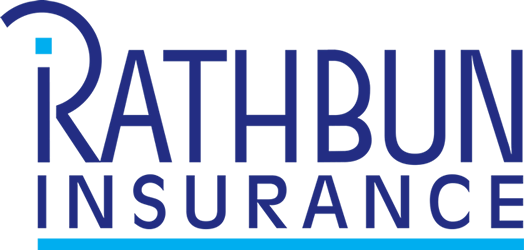
Flood insurance is a type of home or business insurance that covers flooding, which is not covered by standard home or commercial insurance. It can be written to cover buildings and contents and it's designed for owners or renters.
You don’t have to own waterfront property to be at risk for flood damage. Flooding can happen anywhere and it’s a year-round risk. Poor drainage, summer storms, melting snow, flash rains, nearby construction and broken water mains can all lead to damage and loss of property. Just 1 inch of floodwater can cause up to $25,000 worth of damage, according to the National Flood Insurance Program (NFIP). The NFIP is the government entity that provides flood insurance.
Ninety percent of natural disasters involve flooding, and devastation is common.
Standard insurance does not offer flood protection
As mentioned above, homeowners and commercial property insurance do not cover flood damage. A separate flood insurance policy is the only way to cover physical losses to your home or building and its belongings.
When lenders require flood insurance
If your property is in a designated high-risk area, your mortgage lender will require flood insurance before approving a real estate transaction. High-risk areas are determined by flood maps from the Federal Emergency Management Agency (FEMA). They face at least a 25% chance of flooding in a 30-year period (the typical length of a mortgage), or a 1% or greater risk annually.
When lenders don't require flood insurance
Should you still get flood insurance if your home or business isn't in a flood zone? From 2014 to 2018, the NFIP reported that over 40% of all insurance claims it received were from policyholders outside high-risk areas. Fortunately, property owners in moderate- to low-risk zones are eligible for lower-cost policies, so it's worth the investment.
Even if you’ve looked at flood maps in the past, it’s important to know that these maps are always changing. New development in your area, new infrastructure and changing climate patterns can all affect your flood risk.
What's considered a flood?
Having water in your basement does not necessarily count as a flood, but it may depending on where the water came from. A flash rain might saturate the ground, leaving rainwater nowhere to go except into your basement, for example.
A sewage backup is not flooding, nor is wind-driven rain that enters through the windows, doors, roof or other openings in your building. These perils can be covered by a homeowners or business insurance policy endorsement called sewer backup insurance.
According to NFIP, a flood is "a general and temporary condition of partial or complete inundation of 2 or more acres of normally dry land area or of 2 or more properties (at least one of which is your property) due to:
- Overflow of inland or tidal waters; or
- Unusual and rapid accumulation or runoff of surface waters from any source; or
- Mudflow; or
- Collapse or subsidence of land along the shore of a lake or similar body of water as a result of erosion or undermining caused by waves or currents of water exceeding anticipated cyclical levels that result in a flood as defined above."
(Note: Even though a mudflow is a movement of earth, it is covered by flood insurance, not earthquake insurance.)
The danger of relying on federal disaster assistance
Why not rely on federal disaster assistance for flooding? This type of aid is only available when the president formally issues a disaster declaration, which happens with less than 50% of floods. And some disaster assistance comes in the form of a loan that you must repay, with interest.
What does flood insurance cover?
The NFIP offers building and contents coverage. You can buy just one type or both. If you are a renter and lease a property in a high-risk area, your landlord likely carries a policy on the building. However, your landlord's policy won't cover your property or belongings. You should still purchase contents coverage to protect your things.
| NFIP Coverage Limits | Structures | Contents |
| Residential | $250,000 | $100,000 |
| Commercial | $500,000 | $500,000 |
Examples of what building coverage includes:
- The structure and its foundation
- Electric and plumbing systems
- Heating, cooling and water systems
- Built-in appliances, refrigerators and cooking stoves
- Permanently installed flooring, paneling, wallboards, bookcases and cabinets
- Window blinds
- Detached garages (Other outbuildings require separate coverage.)
- Debris removal
Examples of what contents coverage includes:
- Personal belongings such as clothing, furniture and electronics
- Curtains
- Portable and window air conditioners
- Portable appliances
- Carpets not permanently installed
- Washer and dryer
- Food
- Original artwork or other valuables up to $2,500
- Microwaves and portable dishwashers
What’s building and contents coverage don't include:
- Avoidable moisture, mildew and mold damage
- Currency, valuable papers, stock certificates and precious metals
- Outside property, such as landscaping, hardscape, wells, septic systems, pools and hot tubs
- Living expenses required for temporary housing
- Lost wages due to business interruption or loss of use
- Most vehicles on the property
Private flood insurance options
If the exclusions or limits concern you, talk to your insurance agent about other policies for added protection. Some private insurance providers offer higher coverage limits and endorsements, like coverage for additional living expenses and jewelry, but these policies may cost more than NFIP insurance.
Decide before the water rises
There is a 30-day waiting period before NFIP insurance takes effect. Some private flood insurance has a 14-day waiting period. If you’re in a high-risk area, your mortgage lender or business funder will likely require you to carry flood insurance. But even if you're not in a flood zone, flood insurance is worth consideration.
Call your Rathbun Account Manager to get help with the details!

